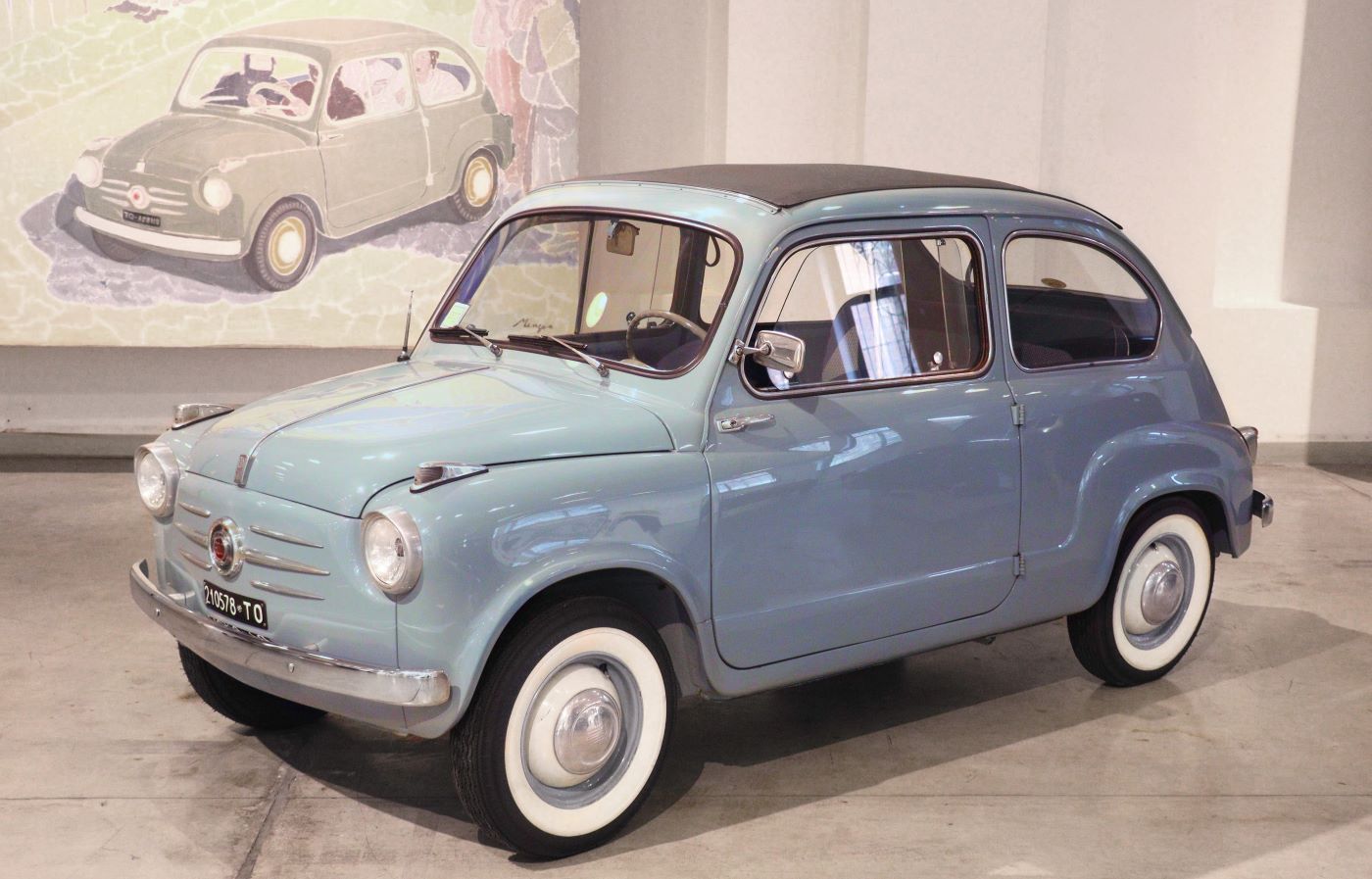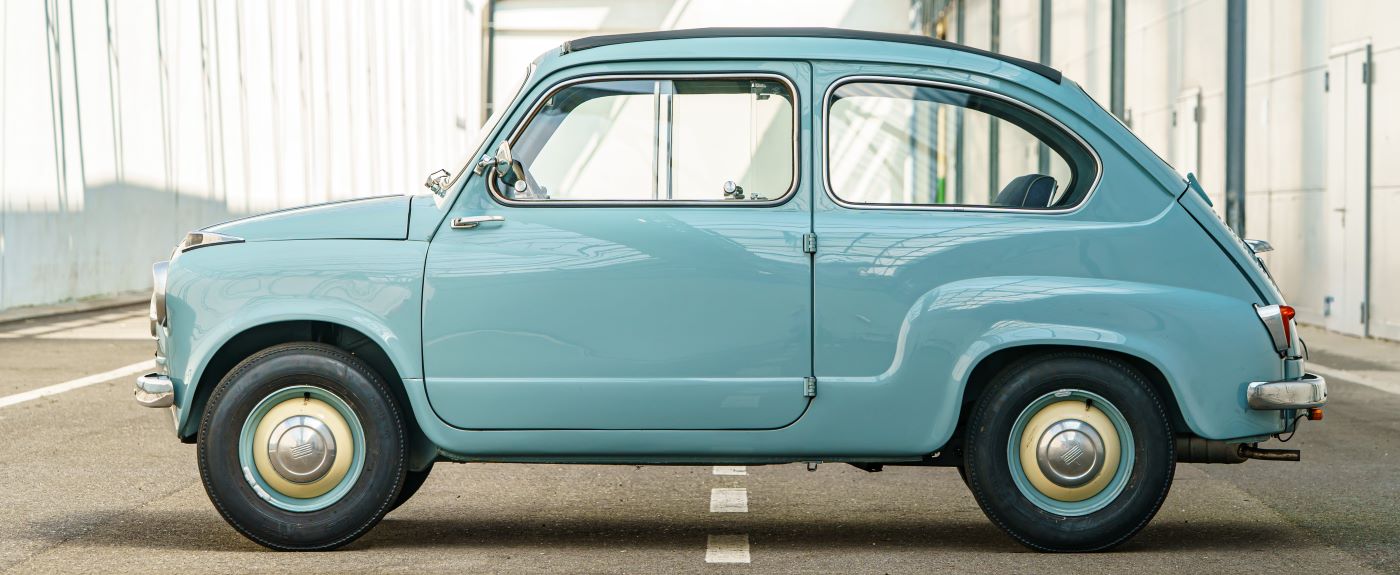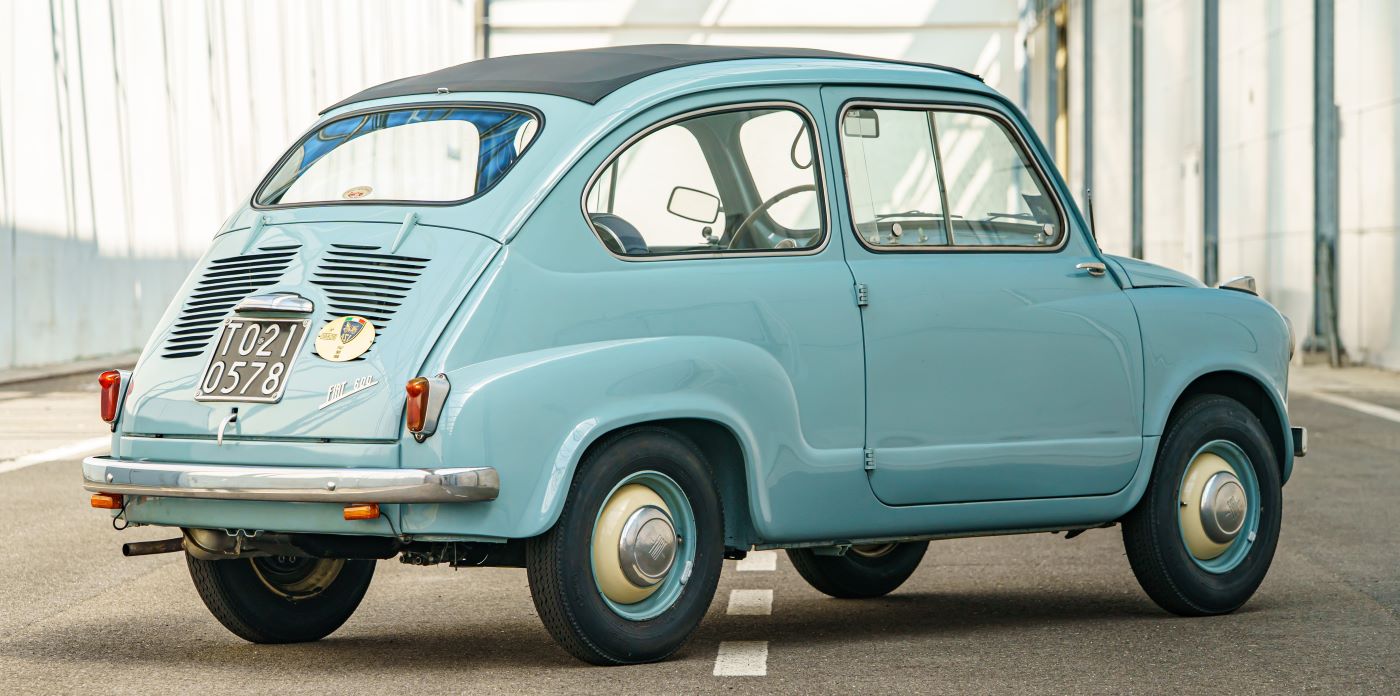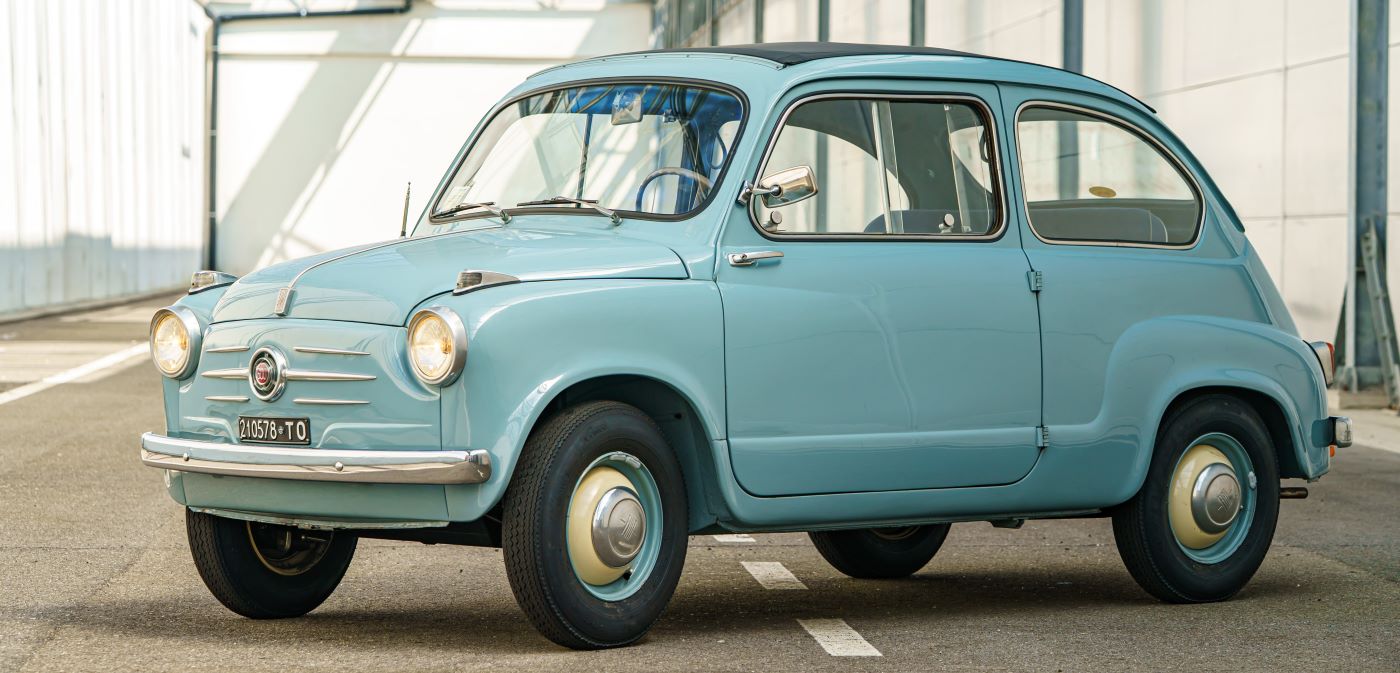
The 1955 Fiat 600 was one of Italy’s most significant postwar automobiles. Compact, economical, and innovative for its time, it helped mobilize a generation of Europeans.
1955 Fiat 600
- Launch Date: Introduced at the Geneva Motor Show in March 1955
- Manufacturer: Fiat (Italy)
- Designer: Dante Giacosa
- Class: City car / Microcar
- Body Style: 2-door saloon (sedan)
- Layout: Rear-engine, rear-wheel drive (RR)
Technical Specifications
Engine:
- Type: Inline-4, water-cooled
- Displacement: 633 cc
- Power Output: 21.5 hp at 4600 rpm
- Top Speed: Approx. 95 km/h (59 mph)
- Transmission: 4-speed manual
Suspension:
- Front: Independent, transverse leaf spring
- Rear: Independent, coil springs, swing axles
- Brakes: Hydraulic drum brakes on all four wheels
- Weight: Around 580 kg (1279 lbs)
- Length: 3215 mm (126.6 in)
- Wheelbase: 2000 mm (78.7 in)
Design & Features
- Monocoque construction, a modern and lightweight approach at the time.
- Rear-hinged “suicide” doors (used until the early 1960s).
- Spartan but clever interior, maximizing space in a tiny footprint.
- Capable of seating four passengers in surprisingly good comfort for its size.
Historical Significance
- Designed during Italy’s postwar recovery to provide affordable mass transportation.
- More than 4 million units were produced worldwide.
- Built not only in Italy but also under license in Spain (SEAT 600), Yugoslavia (Zastava 750), Argentina, Germany (Neckar Jagst 600), and elsewhere.
- Foundation for other important Fiat models like the Fiat 600 Multipla (a pioneering MPV) and Abarth racing versions.
The Fiat 600 was produced from 1955 to 1969 in Italy. In total, over 4.9 million Fiat 600s (all versions and license-built) were produced worldwide.
- 1955–1960: Fiat 600 (633 cc)
- 1960–1969: Fiat 600D (767 cc, improved version)



On the occasion of the model’s 70th anniversary, the starting grid will also feature a charming, light-blue Fiat 600 from the first 1955 series, usually housed at the Centro Storico Fiat in Turin. It will be driven by the all-female crew made up of Laura Confalonieri, Assistant Director of Ruoteclassiche, and Valentina Menassi, a journalist and contributor at Il Giornale. The car instantly evokes memories of the many privately-owned Fiat 600s from the 1960s that confidently took on the race in the so-called “minor classes”—proving that the 1000 Miglia was not only for elite drivers, but was also open to all true enthusiasts. Tracing this model’s history means going back in time and paying homage to Dante Giacosa, FIAT’s most celebrated designer—born 120 years ago—who created iconic models such as the Topolino, the 600, and the 500. In particular, the Fiat 600 was designed to bring widespread mobility to post-war Italy, first supporting and later overtaking the 500 “Topolino”. Designed by Giacosa, it represents a technical and economical turning point thanks to the choice of a rear engine and traction.
The new 633-cc and 21.5-hp Tipo 100 engine guaranteed agility, lightness, and low costs. The body was load-bearing and the suspensions independent, with every aspect of the project aimed at maximizing efficiency. There was no lack of original and creative solutions, including the headlights—originally placed on the hood and later moved to the fenders to simplify production—and the rear-hinged doors, which were fitted with three-part windows—including one in plexiglass which could open vertically inwards as a deflector. Under the front bonnet were the petrol tank, spare wheel, and a space for small baggage. The simple yet ingenious passenger compartment could be made larger by folding down the rear seat.
Unveiled at the 1955 Geneva Motor Show, it instantly won over the public with its modern lines, four seats, 95 km/h speed, and affordable price. Technical and stylistic advancements followed, including the renowned 1956 600 Multipla, the precursor to the modern minivan. Production continued even after the arrival of the Fiat 850 in 1964, with which it exchanged various elements. In total, over 4.9 million models were produced in Italy and abroad. It is important to note that the quality of the “Tipo 100” project meant the 600’s engine continued to evolve over the years, constantly increasing in power and being repurposed for other Fiat models: from the 850 to the 127, from the first Autobianchi A112 Abarth 58 HP to the Panda 45 and the Fiat Uno 45, passing the baton to the FIRE engines in the mid-1980s but remaining unused until the 2000s. And this extended far beyond the engine: the 600’s frame and chassis would also prove their worth in the unbeatable tune-ups created by Abarth, the 850 and 1000 TC, which would go on to write chapters in the history of the Scorpion brand on circuits all over the world.

You must be logged in to post a comment.